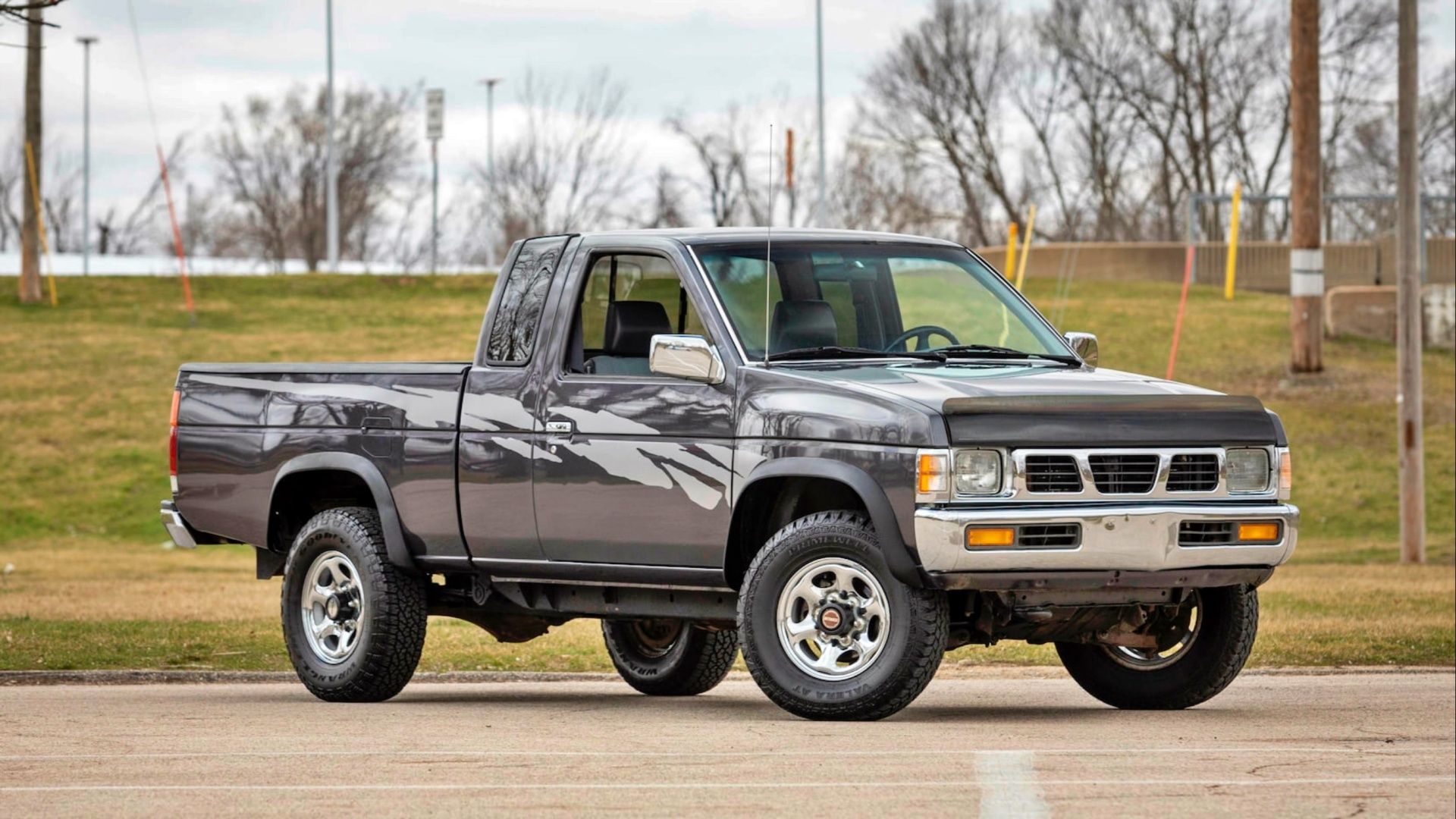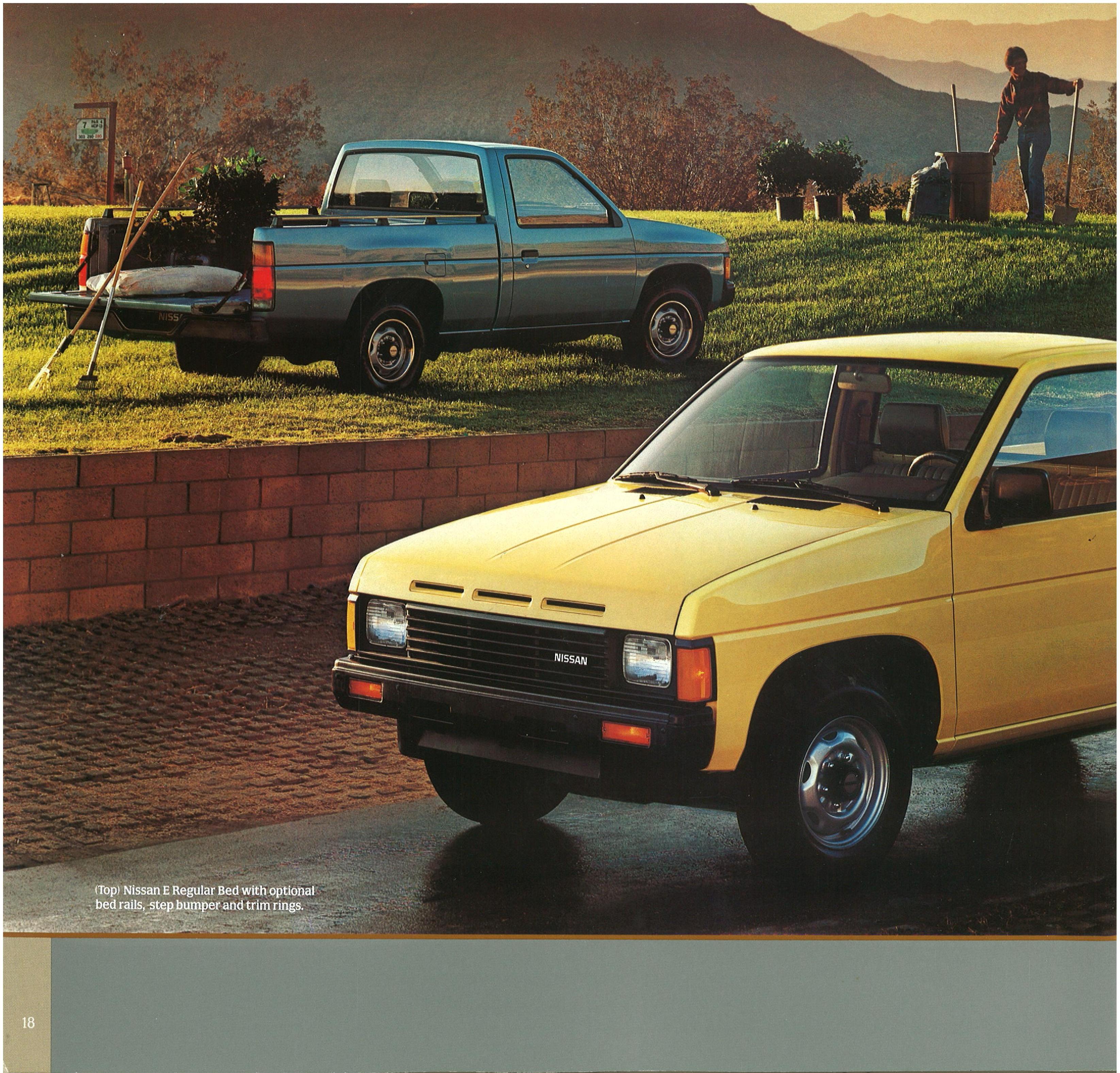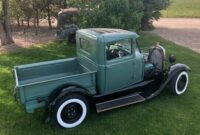Nissan Hardbody Trucks For Sale: Your Comprehensive Guide to an Enduring Legend pickup.truckstrend.com
The Nissan Hardbody, officially known as the D21 generation of Nissan compact pickup trucks, holds a special place in automotive history. Produced from 1986 to 1997 for the North American market, these rugged, no-nonsense vehicles earned their "Hardbody" moniker from their double-wall bed construction and reputation for incredible durability. For decades, they served as reliable workhorses, adventurous off-road companions, and dependable daily drivers, cementing their legacy as one of the most beloved and resilient compact trucks ever built.
Today, the market for Nissan Hardbody Trucks For Sale remains vibrant. Enthusiasts, budget-conscious buyers, and those seeking a simple, capable vehicle continue to hunt for these vintage gems. This comprehensive guide will delve into everything you need to know about finding, evaluating, and owning a Nissan Hardbody, ensuring you make an informed purchase and enjoy the unique charm of this automotive icon.
Nissan Hardbody Trucks For Sale: Your Comprehensive Guide to an Enduring Legend
Why The Hardbody Endures: Benefits of Owning a Nissan Hardbody
Before diving into the specifics of finding Nissan Hardbody Trucks For Sale, let’s understand why these trucks continue to be so popular:
- Unrivaled Durability and Reliability: The Hardbody was engineered for longevity. Its robust frame, simple mechanicals, and well-proven powertrains (especially the KA24E 4-cylinder and VG30E V6) mean that many examples are still running strong with hundreds of thousands of miles on the odometer.
- Simplicity and Ease of Maintenance: Unlike modern trucks laden with complex electronics, the Hardbody is refreshingly simple. This translates to easier and often cheaper repairs, making it a favorite for DIY mechanics and those who prefer straightforward automotive engineering.
- Versatility: Whether you need a truck for hauling, off-road adventures, a minimalist daily driver, or a platform for custom builds (from lowriders to overland rigs), the Hardbody’s adaptable nature makes it suitable for a wide range of uses.
- Affordability: Compared to newer trucks, or even other classic trucks of similar capability, Hardbodys generally offer excellent value for money. This makes them an attractive option for first-time truck owners or those on a tighter budget.
- Classic Appeal: As a true product of the 80s and 90s, the Hardbody possesses a timeless, utilitarian aesthetic that resonates with classic vehicle enthusiasts. Its boxy lines and no-frills design are increasingly appreciated in an era of over-styled vehicles.
- Strong Aftermarket Support: Due to its popularity, a healthy aftermarket exists for parts, both OEM replacements and performance/off-road upgrades. This makes maintenance and customization relatively easy.

Understanding the Generations and Models: What to Look For

The term "Hardbody" primarily refers to the D21 generation, produced from 1986 to 1997. Within this generation, you’ll encounter several variations:
- Engines:
- Z24 (1986-1989): A 2.4L SOHC 4-cylinder, known for its workhorse reliability.
- KA24E (1990-1997): An updated 2.4L SOHC 4-cylinder, offering slightly more power and efficiency. This is the most common engine you’ll find.
- VG30E (1986-1995): A 3.0L SOHC V6, providing significantly more power and torque, ideal for towing or heavier loads.

- Cab Configurations:
- Regular Cab: The standard two-door, two-seat setup.
- King Cab: Extended cab with jump seats behind the main seats, offering a bit more interior storage or occasional passenger space.
- Drivetrain:
- 2-Wheel Drive (2WD): Lighter, slightly better fuel economy, often found with automatic transmissions.
- 4-Wheel Drive (4WD): The go-to for off-road enthusiasts, featuring a robust transfer case and solid front axle on many models.
- Trim Levels: While less distinct than modern trucks, you’ll find base models (often simply "Pickup"), XE, SE, and ST trims, which varied in features like power windows, air conditioning, alloy wheels, and interior appointments.
When looking for Nissan Hardbody Trucks For Sale, understanding these variations will help you narrow down your search based on your specific needs and budget.
What to Look For When Buying: A Practical Inspection Guide
Purchasing a used vehicle, especially one that’s decades old, requires careful inspection. Here’s a checklist for evaluating Nissan Hardbody Trucks For Sale:
- Rust is the Enemy: This is paramount. Inspect the frame thoroughly, especially near the leaf spring mounts, control arm mounts, and bed supports. Check cab corners, rocker panels, fender wells, and the bed floor. Surface rust is common and often manageable, but extensive frame rust or perforation is a major red flag.
- Engine Condition:
- Cold Start: Listen for any excessive rattling, especially from the timing chain (common on KA24E engines, which might indicate worn guides).
- Leaks: Check for oil, coolant, or power steering fluid leaks.
- Smoke: Blue smoke indicates oil burning; white smoke suggests coolant issues.
- Fluids: Check oil and coolant levels and appearance.
- Transmission and Drivetrain:
- Manual: Test all gears, ensuring smooth engagement and no grinding. Check clutch feel.
- Automatic: Check fluid level and color (should be red, not dark or burnt). Test shifting through all gears, looking for harsh shifts or slipping.
- 4WD (if applicable): Engage 4-high and 4-low. Listen for unusual noises. Ensure the front hubs lock properly (manual or automatic).
- Suspension and Steering:
- Look for worn bushings, leaky shocks, or broken leaf springs.
- Check for excessive play in the steering wheel; common culprits are the idler arm or tie rod ends.
- Brakes: Check for spongy pedal feel, pulling to one side, or grinding noises. Inspect brake lines for rust or damage.
- Electrical System: Test all lights (headlights, taillights, turn signals), gauges, wipers, horn, and any power accessories (windows, locks).
- Interior: Assess the condition of seats, dashboard, and carpets. Look for water leaks from the windshield or rear window seals.
- Tires: Check tire wear, age, and tread depth.
- Documentation: Ask for maintenance records, proof of ownership, and a clean title. A vehicle history report (like CarFax or AutoCheck) can provide valuable insights into accidents, mileage discrepancies, or title issues.
- Test Drive: This is non-negotiable. Pay attention to how the truck accelerates, brakes, steers, and handles bumps. Listen for any unusual noises.
Common Issues and Solutions
While robust, Hardbodys aren’t immune to age-related issues. Knowing these can help in your inspection and future ownership:
- KA24E Timing Chain Guides: The plastic guides on the timing chain of the KA24E engine are known to wear out, causing a rattling noise (especially on startup). This is a common and fixable issue, often addressed by replacing the guides with metal ones.
- Rust: As mentioned, rust is the biggest enemy. Early intervention on surface rust with wire brushing and rust-converter primer can prolong the life. Extensive frame rust may require professional welding.
- Electrical Gremlins: Older wiring can lead to intermittent electrical issues. Many are simple fixes involving checking grounds, fuses, or old connectors.
- Steering Play: Often traced to a worn idler arm or tie rod ends, which are relatively inexpensive and easy to replace.
- A/C System: Many older Hardbodys will have non-functional AC due to age, leaks, or being designed for the now-obsolete R12 refrigerant. Conversion to R134a is possible but may require new components.
Where to Find Nissan Hardbody Trucks For Sale
Finding the right Hardbody requires patience and knowing where to look:
- Online Marketplaces:
- Craigslist & Facebook Marketplace: Excellent for local listings, often from private sellers. Be prepared to travel and inspect thoroughly.
- eBay Motors: Wider geographical reach, often higher-priced or specialized vehicles.
- Bring a Trailer (BaT): For exceptionally well-preserved or custom builds, often fetching premium prices.
- Dedicated Forums and Groups: Join Nissan truck forums (e.g., Nissan Pathfinder/Hardbody Forum) or Facebook groups dedicated to Nissan D21s. Enthusiasts often sell their well-maintained trucks here.
- Local Dealerships: Less common for these older models, but some independent used car lots might have them.
- Word of Mouth: Let friends, family, and local mechanics know you’re looking.
- Auctions: Government or public auctions can sometimes yield hidden gems, but they often come with little inspection time.
Nissan Hardbody Trucks For Sale: Estimated Pricing Guide
The price of a Nissan Hardbody can vary wildly based on condition, mileage, engine, drivetrain (2WD vs. 4WD), cab configuration, and geographical location. Here’s a general estimated pricing table:
| Condition Category | Description | Estimated Price Range (USD) | Key Factors Influencing Price |
|---|---|---|---|
| Poor/Parts | Significant rust, non-running, major mechanical issues, incomplete. Good for parts or a full restoration. | $500 – $1,500 | Severity of damage, completeness, availability of title. |
| Fair/Driver | Runs and drives, but has obvious cosmetic flaws, minor mechanical issues, or significant deferred maintenance. | $1,500 – $4,000 | Engine/transmission health, extent of rust, required repairs, mileage. |
| Good/Reliable | Well-maintained, minimal rust, all systems generally functional. May have minor dents/scratches. | $4,000 – $8,000 | Low mileage, 4WD, desirable engine (V6), King Cab, recent major maintenance (e.g., timing chain). |
| Excellent/Restored | Near-mint condition, fully restored, very low original mileage, or meticulously maintained. | $8,000 – $20,000+ | Originality, quality of restoration, rare configurations (e.g., factory V6 4×4 King Cab), provenance. |
Note: These are general estimates and market prices can fluctuate based on demand and specific vehicle details.
Maintenance Tips for Hardbody Owners
Once you’ve found your Hardbody, proper maintenance will ensure its continued longevity:
- Regular Fluid Changes: Adhere to oil, transmission, differential, transfer case, and coolant change schedules.
- Rust Prevention: Regularly wash off road salt and debris. Consider undercoating or rust-proofing treatments, especially if you live in a corrosive environment.
- Inspect Belts and Hoses: Replace them proactively before they fail.
- Grease Chassis Components: Keep ball joints, tie rod ends, and other suspension components properly greased.
- Address Issues Promptly: Don’t let small problems fester; they can quickly become larger, more expensive repairs.
- Timing Chain (KA24E): If not already done, consider proactively replacing the timing chain and guides with a metal guide kit, especially if you hear any rattling.
Frequently Asked Questions (FAQ) about Nissan Hardbody Trucks For Sale
Q1: Are parts still available for Nissan Hardbody trucks?
A1: Yes, absolutely! Many common wear items and mechanical components are readily available through aftermarket suppliers, online retailers, and even some Nissan dealerships. Junkyards are also a good source for body panels and interior parts.
Q2: Is the Nissan Hardbody a good truck for off-roading?
A2: The 4WD Hardbody is an excellent off-road platform. Its compact size, solid frame, and good ground clearance (especially in 4WD form) make it very capable. There’s also a strong aftermarket for lift kits, lockers, and other off-road modifications.
Q3: Which engine is better, the KA24E or the VG30E V6?
A3: It depends on your needs. The KA24E 4-cylinder is known for its incredible reliability and decent fuel economy, making it great for daily driving and light hauling. The VG30E V6 offers significantly more power and torque, better for towing or if you simply prefer more grunt. The V6 is less common and might be harder to find parts for, but it’s equally robust.
Q4: What’s the typical mileage life of a Hardbody?
A4: With proper maintenance, it’s not uncommon for Hardbodys to exceed 200,000 or even 300,000 miles. Many owners report seeing 400,000+ miles on well-cared-for examples.
Q5: Can a Nissan Hardbody tow?
A5: Yes, but its towing capacity is limited compared to full-size trucks. Depending on the engine, drivetrain, and specific year, a Hardbody can typically tow between 3,500 and 5,000 pounds. Always consult the owner’s manual for exact specifications and ensure your truck is in good mechanical condition before towing.
Q6: Are Hardbody trucks safe by modern standards?
A6: As an older vehicle, the Hardbody lacks many modern safety features like airbags (early models had none, later models had a driver’s airbag option), ABS (optional), and advanced driver-assistance systems. While robust, its crash safety standards are from the 80s and 90s. Drive defensively and understand its limitations.
Conclusion
The Nissan Hardbody remains a compelling choice in the used truck market. Its reputation for bulletproof reliability, straightforward design, and surprising versatility makes it an enduring legend. For those seeking an affordable, dependable, and characterful truck that can handle work, play, and everything in between, a well-maintained Hardbody is an excellent investment. By following this guide, you’ll be well-equipped to navigate the world of Nissan Hardbody Trucks For Sale and find the perfect rugged companion to serve you for years to come.


